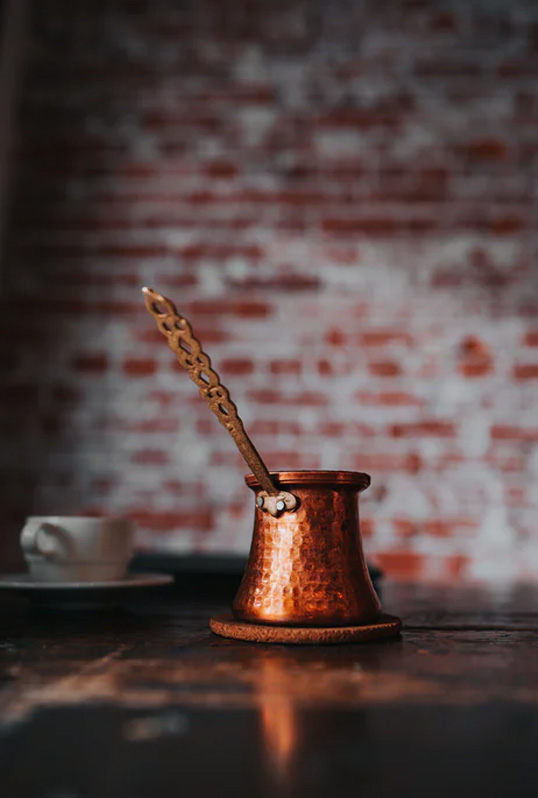Unknown aspects of the history of Greek coffee

Secrets from the tradition of the beloved Greek Coffee.
When was the last time you enjoyed a Greek coffee? With Greek coffee culture now revolving around espresso and the drinks that result from it, Greek coffee is a habit that tends to be forgotten, with an ever-declining audience. In the minds of many, he is identified with his grandparents, or even on holidays in small places, with traditional cafes.
Many consider Greek coffee grandfatherly, old-fashioned and boring, but the truth is that in its golden age, that is, roughly until the Second World War, the Greek coffee was an exciting experience, particularly interesting, while the "tampides" would put the glasses on many baristi of our time.
Let's get to know two forgotten details of the history of Greek coffee: the dozens of variations, but also the invisible heroes of the cafes, the tabids.
 How many different Greek Coffees could one order?
How many different Greek Coffees could one order?
Greek coffee may seem simple to us, compared to the drinks we are used to enjoying today, as it consists exclusively of ground coffee, water and occasionally sugar, but in its heyday, it was an extremely complicated affair, and the variations of it stun the current coffee lover!
The orders of Greek coffee differed mainly in the sugar, in the cooking time, in the way of cooking, but also in some "tricks" that regulated how much cream the cup will have. Combining all the above variations, those who have dealt with the history of coffee and cafes in Greece, point out that there were, more or less, at least 48 different variatiosns of Greek coffee, and in some cases even more.
Some of the most well-known variants of Greek are the following: plain light boiled, plain boiled, plain heavy, with a little boiled, with a little heavy, medium boiled, medium heavy, yes and no boiled, yes and not heavy, sweet boiled, heavy boiled sweet, many sweet boiled, many heavy sweet, many heavy half, ottoman heavy, medium light, with a little light.
The prefixes "slightly", "plain", "moderate", "sweet" and "very sweet" refer naturally to the addition or not of sugar, which was always made from the beginning, before the coffee was brewed, and never after. In the "boiling" coffee, the kettle was raised high, so that there are bubbles on the surface of the coffee, while in the "heavy" this movement is avoided, in order for the coffee to retain a thick "cream", the well-known kaimaki.
Ταμπής: ο barista της χρυσής εποχής του ελληνικού καφέ
Greek coffee required special dexterity, technique and time to be prepared properly, according to the particular tastes and desires of each customer. If one considers the size of the old, classic Greek cafes, especially those located in the center of Athens, and therefore the large number of customers at rush hour, most of whom were regular and therefore with specific preferences for the cup one realizes that making coffee was probably the most crucial (and well-paid) position in a good cafe.
The employee who undertook the preparation of Greek coffee was called tampis, and was no different from the current barista. Tampis had to be fast, accurate, with experience in coffee, since there was no time and no means for accurate weighing of water, coffee but also for timing of boiling: everything was done with the "eye" and the "hand", whose experience was perhaps the most decisive factor for the success of Greek coffee. He still had to be tireless, as he worked upright for many hours and skillfully, since many orders differed only in points (for a few grams, a few seconds or a few beats of the kettle). Also, Tampis had to have an elephant memory, as the good, regular customers took it for granted that the store knew their order and did not even bother to ask for the coffee they wanted - the waiter simply told Tampis "a coffee for mr Thanasis ".
We realize that tabis was the soul of the store, the mind and the heart of the coffee shop. The experienced tabides were sought after and well paid, as it was their own skills that brought together the store's customers. Large, central cafes often had two, three or more tabs to cope with the intensity of the day.
The next time you enjoy a Greek coffee, think that every sip hides in it a large part of the Greek coffee culture, which, no matter how old, will always remain alive and very, very sweet.










